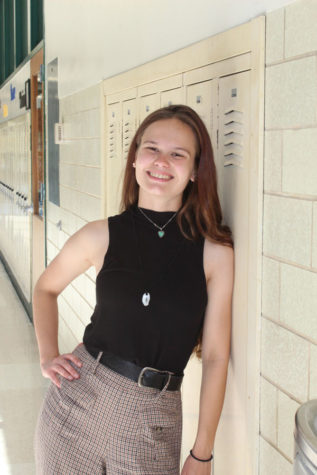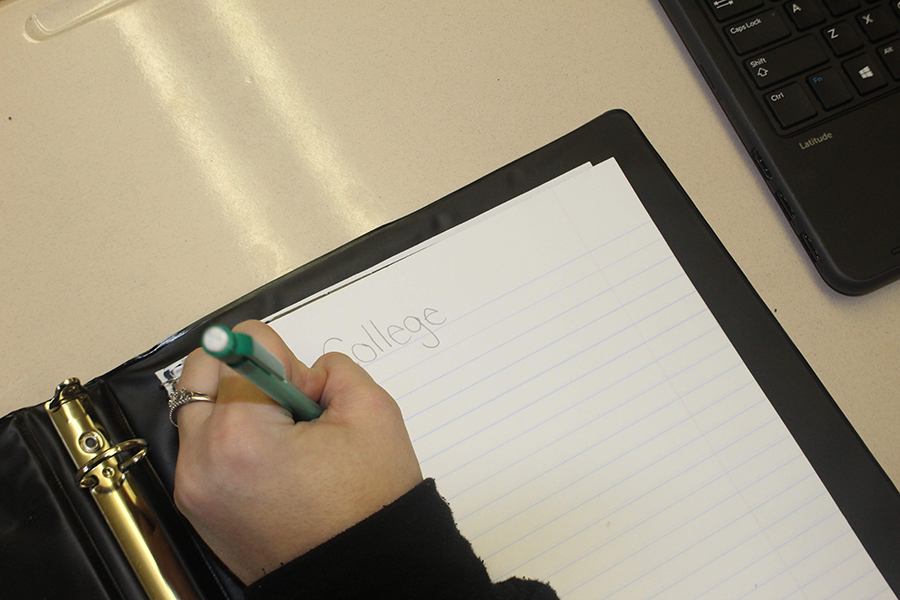Although many students want time to decide where they want to go to college, some already know exactly where they want to go, and want to commit as early as possible. Early Decision, which is a binding contract that requires students to attend a school if they are admitted, is how many students with this mindset apply.
“Students apply early decision because they’ve come to a clear decision about where they want to be,” said Barone. “There can also be benefits in the acceptance rates in early decision—they are often higher than in other rounds—but the decision to commit to early decision really relies on a confidence that that particular college is the student’s first choice.”
One major downside to applying Early Decision is the negative impact backing out has on a student’s chances for admission elsewhere. Backing out of an Early Decision acceptance agreement can result in negative consequences for the student, according to the U.S. News article “What Happens to Students Who Back Out of Early Decision Offers.”
“The early decision agreement is not legally binding and the school wouldn’t go after the student for tuition, but there could be other consequences,” the article said. “If, for instance, they found out a student somehow had applied to two different places early decision, or even another early action and the student had broken the early decision agreement, [Richard Nesbitt, an admissions counselor at Williams College] says they’d call the other schools and the student would risk losing both acceptances.”
For students who do not plan on backing out of the agreement, however, Early Decision can be a good option, one that students can choose for a variety of reasons: some apply so that they can commit to a sports team, while others simply like the school enough to know that it is where they want to continue their education.
Hannah Frick, a CHS senior, applied Early Decision to New York University so as to show the school how much she cared about attending.
“It’s always been a school I wanted to go to, and it has the second best film program in the world,” said Frick. “When I stepped on the campus, it felt like home. It was a very fast paced and liberal environment, and that’s the kind of person I am…I wanted NYU to know that I was extremely serious about them, and that there was no other school for me.”
Frick said that she was one of the only people among her peers to apply Early Decision to college.
“I think there were a few kids, but a majority decided to apply Early Action or Early Decision,” said Frick. “This is the school I want to go to no matter what, it’s my dream school, maybe they don’t feel that way about all the schools they are applying to.”
Students who applied Early Action and Early Decision are currently in the process of hearing back from their chosen institution.


Dyamond C Jones • Jan 14, 2019 at 9:08 pm
I think it is very important that students are aware of the differences between Early Action and Early Decision. Many students fail to recognize the important difference and potentially run the risk of becoming contractually bonded to a university they can not afford.
Evan Bates • Jan 14, 2019 at 12:47 pm
I really wish I had read this before I applied. I did apply by early action to Dickinson but it would have made things so much easier if I had been more informed about my choice. I think that I made the correct choice in this instance but it would have been a load off my back to know about this beforehand. Too bad for me, I guess but the cards have already been dealt.
Zoe Spielman • Jan 14, 2019 at 12:23 pm
When I was applying to colleges, I avoided doing early decision and early action applications because I didn’t fully understand the difference between the two. Even though only one of the three colleges I applied to had early decision and early action options, I decided to apply regular decision because even though I would’ve known my admission status earlier, this college wasn’t one of my top colleges due to location and campus. Now that I read this article, I understand the difference between early action and early decision and wish I would’ve applied to the one college early action rather than regular decision.
Grace Colestock • Jan 14, 2019 at 11:11 am
I agree that the difference between the two definitely needed explained because I always thought they were pretty much the exact same thing. I think that both are very beneficial to students though, so they can get on top of things and are not rushing at the last minute to apply and figure out where they’re going to school.
Thomas K • Jan 14, 2019 at 4:28 am
The binding nature of early decision applications is definitely a heavy commitment. The freedom that early action gives is a nice bonus, and getting applications out of the way early frees up stress.
Armela Ferhatovic • Jan 13, 2019 at 6:09 pm
I think that it is important that the differences between early action and early decision were explained. A lot of students get the two confused. I also know that a lot of students have considered applying early decision not realizing it is binding.